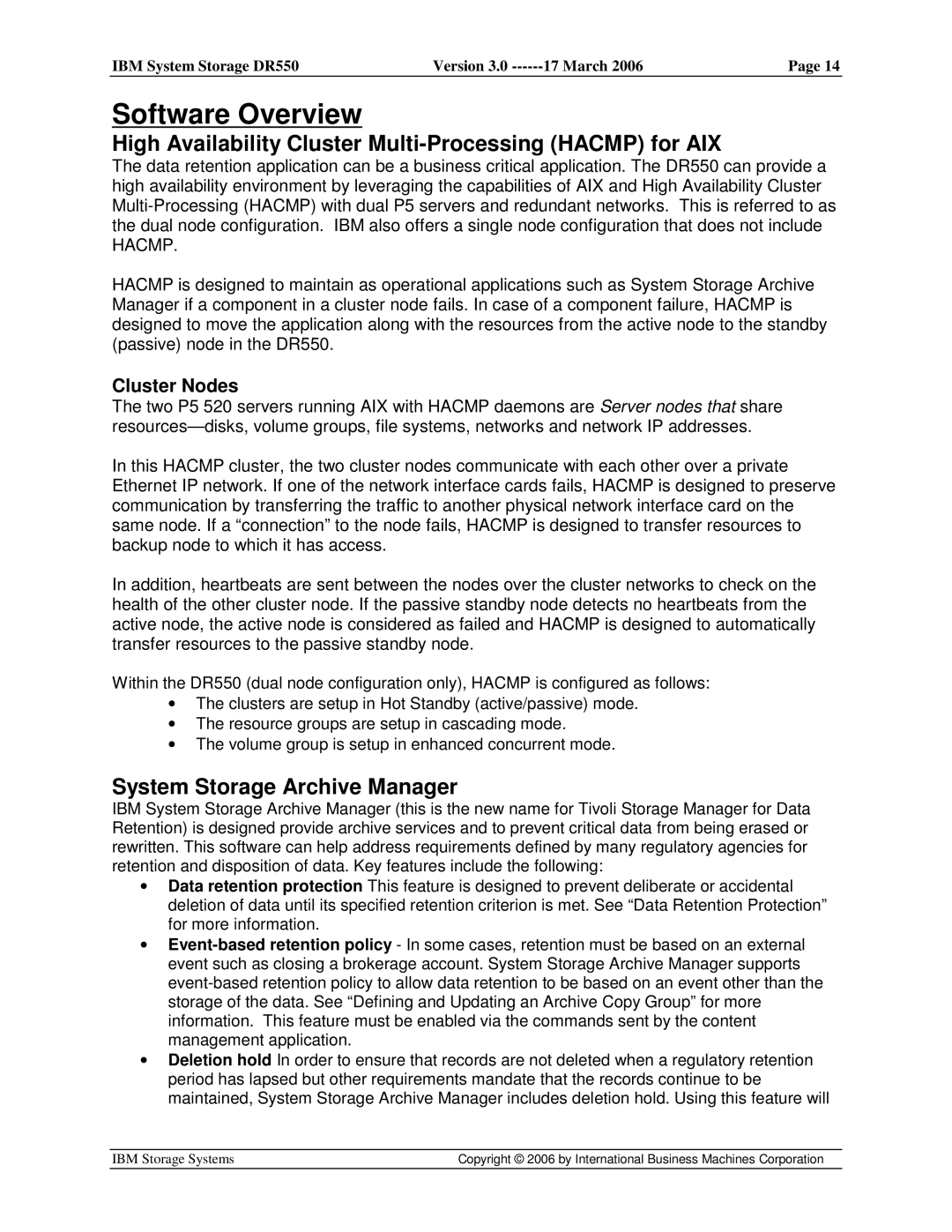IBM System Storage DR550 | Version 3.0 | 17 March 2006 | Page 14 |
|
|
|
|
Software Overview
High Availability Cluster Multi-Processing (HACMP) for AIX
The data retention application can be a business critical application. The DR550 can provide a high availability environment by leveraging the capabilities of AIX and High Availability Cluster
HACMP.
HACMP is designed to maintain as operational applications such as System Storage Archive Manager if a component in a cluster node fails. In case of a component failure, HACMP is designed to move the application along with the resources from the active node to the standby (passive) node in the DR550.
Cluster Nodes
The two P5 520 servers running AIX with HACMP daemons are Server nodes that share
In this HACMP cluster, the two cluster nodes communicate with each other over a private Ethernet IP network. If one of the network interface cards fails, HACMP is designed to preserve communication by transferring the traffic to another physical network interface card on the same node. If a “connection” to the node fails, HACMP is designed to transfer resources to backup node to which it has access.
In addition, heartbeats are sent between the nodes over the cluster networks to check on the health of the other cluster node. If the passive standby node detects no heartbeats from the active node, the active node is considered as failed and HACMP is designed to automatically transfer resources to the passive standby node.
Within the DR550 (dual node configuration only), HACMP is configured as follows:
•The clusters are setup in Hot Standby (active/passive) mode.
•The resource groups are setup in cascading mode.
•The volume group is setup in enhanced concurrent mode.
System Storage Archive Manager
IBM System Storage Archive Manager (this is the new name for Tivoli Storage Manager for Data Retention) is designed provide archive services and to prevent critical data from being erased or rewritten. This software can help address requirements defined by many regulatory agencies for retention and disposition of data. Key features include the following:
•Data retention protection This feature is designed to prevent deliberate or accidental deletion of data until its specified retention criterion is met. See “Data Retention Protection” for more information.
•
•Deletion hold In order to ensure that records are not deleted when a regulatory retention period has lapsed but other requirements mandate that the records continue to be maintained, System Storage Archive Manager includes deletion hold. Using this feature will
IBM Storage Systems | Copyright © 2006 by International Business Machines Corporation |
|
|
